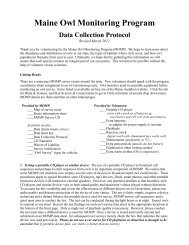Focus Species Forestry - Maine Audubon
Focus Species Forestry - Maine Audubon
Focus Species Forestry - Maine Audubon
Create successful ePaper yourself
Turn your PDF publications into a flip-book with our unique Google optimized e-Paper software.
Northern Waterthrush<br />
Distribution: Alaska to Newfoundland, south to Washington, Ohio,<br />
and Pennsylvania<br />
<strong>Maine</strong> <strong>Focus</strong> Region: Statewide<br />
Territory: 1-4 acres<br />
Food: Aquatic insects, occasionally mollusks and crustaceans<br />
Special Habitat Needs: Forested wetlands with pools of standing<br />
water or pond shores with dense brush. Nests in upturned root<br />
masses.<br />
Management<br />
Maintain forest and shrub-sapling cover in wetland areas.<br />
See riparian and wetland forest recommendations (Section 5).<br />
Comments: More often heard than seen, the northern waterthrush announces its presence with a very loud, clear,<br />
descending “here, here, here here here.” One study in <strong>Maine</strong> found that the northern waterthrush was intolerant of<br />
timber harvesting. The species winters in the West Indies and northern South America. Riparian and wetland<br />
management zones inhabited by northern waterthrush protect water quality and aquatic habitat and provide for a<br />
wide range of other species including amphibians, some reptiles, mink, and many plants.<br />
Habitat Use:<br />
Aspen-Birch<br />
Forest Ecosystems<br />
Northern<br />
Hardwoods Oak-Pine Hemlock Spruce-Fir<br />
N. White<br />
Cedar<br />
R S I M R S I M L R S I M L I M L R S I M L I M L<br />
Special-value<br />
Habitats<br />
Riparian/<br />
Wetland Vernal<br />
Forest Pool<br />
R Regeneration and seedlings Mx Mixed conifer-deciduous <strong>Focus</strong> habitat<br />
S Saplings and small poles U Understory present Other habitat<br />
I Intermediate-aged forest C Cavity tree or snag Little/no use<br />
M Mature forest<br />
L Late-successional forest<br />
References: Boone and Krohn 1998, DeGraaf and Yamasaki 2001, Hagan et al. 1997, Sauer et al. 2003, Sibley<br />
2000, Terres 1991<br />
52<br />
<strong>Focus</strong> <strong>Species</strong> <strong>Forestry</strong>



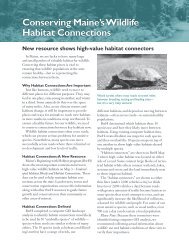
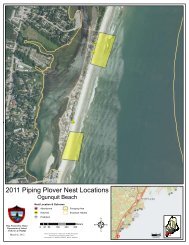
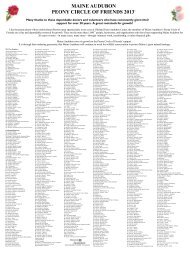
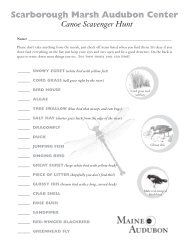

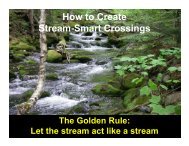
![2012 Loon Count Results [pdf] - Maine Audubon](https://img.yumpu.com/26228732/1/190x245/2012-loon-count-results-pdf-maine-audubon.jpg?quality=85)
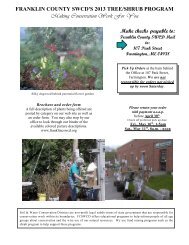
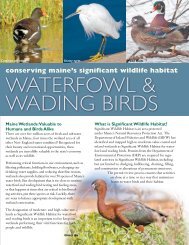
![Lake Fish of Maine (DIFW list) [pdf] - Maine Audubon](https://img.yumpu.com/23282964/1/190x245/lake-fish-of-maine-difw-list-pdf-maine-audubon.jpg?quality=85)
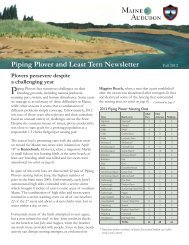

![The Maine Audubon Peony Circle of Friends 2012 [pdf]](https://img.yumpu.com/22707677/1/190x253/the-maine-audubon-peony-circle-of-friends-2012-pdf.jpg?quality=85)
